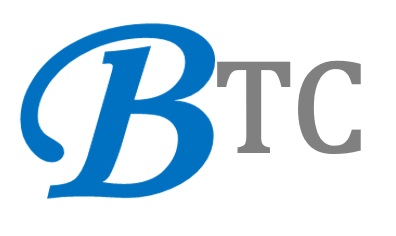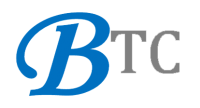
It’s no secret companies spy on their staff.
A recent New York Times article stated that eight of the 10 largest American companies surveil their employees with tracking software. According to The Washington Post, global demand for employee monitoring tools increased by 65% from 2019 to 2022.
The rise of remote work has made corporate leaders paranoid, thinking they must monitor their employees’ every digital move.
Employee productivity software often measures vanity metrics, such as how many emails employees send, virtual meetings they attend, and how much time they spend typing on their computer keyboards. It doesn’t track tasks away from the computer — disregarding time spent thinking, reading or writing on paper, for example — or measure accomplishments and outcomes. Not even the leaders of productivity software approve of this use case for their apps.
“Measuring productivity based on surface-level activity like ‘messages sent’ gives us an extraordinarily limited view into a person’s contributions to their organization,” Brian Elliott, Slack senior vice president, told The Washington Post. “Not only is it arbitrary, it’s usually counterproductive.”
When employees know their performance is being measured by the rules of productivity software, they become motivated to prioritize emails and messages over their core work. This perpetuates a terrible “cycle of responsiveness,” as consultant turned professor Leslie Perlow wrote in her book Sleeping with Your Smartphone. It’s what happens when employees adjust to work “demands — adapting the technology they use, altering their daily schedules, the way they work, even the way they live their lives and interact with their families and friends — to be better able to meet the increased demands on their time.”
While managers may not have a say in whether their company employs productivity software, they can examine whether their management style is sending a similar message. Ask yourself:
Do you expect near-immediate responses to emails?
Do you ask for regular status updates or send “just wanted to make sure you saw my last email” emails?
Do you plan check-ins around your schedule without considering your employee’s needs?
Do you plan “brainstorming sessions” with no agenda?
If your answer to any of the above questions is yes, you’re likely distracting your employees rather than encouraging their productivity. These four strategies can help you change your ways and build an indistractable workplace.
Open a dialogue about distractions.
A big problem with distraction at work is that we can’t talk about the problem of distraction at work. Asking employees for feedback on the most significant work distractions won’t work if they fear reprisal for sharing their thoughts.
To build a culture where employees do their best work, managers must foster what psychologists call “psychological safety,” or the sense of security that comes from knowing there’s no punishment for raising reasonable concerns. Only when people feel safe discussing their workplace problems will you be able to find solutions to fix them. Chances are, if your workplace can’t talk about distraction, there are all kinds of other skeletons in the closet you can’t discuss either.
Schedule-sync with your employees.
Many managers have little idea how their employees spend their time. Then, when people take longer than expected to finish tasks and projects, you wonder if employees lack the capability or motivation to do their job well.
But chances are this isn’t the case. Likely, employees are distracted by constant interruptions, pointless meetings, and a never-ending flow of emails (some of which you may have initiated).
Schedule-syncing helps you gain better insight into how people spend their time, which can be achieved in several ways.
One option is to ask employees to share a timeboxed calendar of what they plan to do and when — for example, when they like to answer emails and messages, do focused work, or be available for calls and meetings. This gives you visibility into how they plan their day so you can avoid interruptions during their focused work or off hours or suggest reprioritization if necessary. You can also share your calendar so employees know when they can — or can’t — interrupt you.
Another schedule-syncing tactic is to have your team designate specific distraction-free periods each day —no messages, no calls, no emails, no meetings, and no quick in-person check-ins. For anyone.
Using schedule-syncing tactics will help you gain better insight into how employees spend their time without micromanaging them.
Don’t hold meetings without an agenda.
Think of how many meetings you attended in the past week. Now ask yourself how many of those meetings were a waste of time and likely could have been an email. Next, recall how many meetings you attended had an agenda circulated by the organizer. I’m guessing very few.
Agendas were invented for a reason, and although it’s a practice adhered to by high school student council groups, people somehow forget it when they get to the corporate world.
Too often, people schedule a meeting to avoid having to put in the effort of solving a problem themselves. Collaboration can be a powerful problem-solving tool, but people shouldn’t use meetings as a distraction from the hard work of thinking.
Requiring an agenda keeps everyone on track and cuts down on unnecessary meetings by adding a bit of effort on the part of the organizer before calling one.
Set an example.
Company culture, like water, flows downhill. People turn to their managers to know what’s expected of them. You can’t demand that your staff work without distraction if you’re constantly looking at your phone in the middle of meetings or sending emails at midnight.
So, make time for focused work yourself. Let people know when you’re available, and don’t interrupt others during their focused work or off-hours. The most critical step to building an indistractable workplace is being an indistractable boss.
While leaders may suspect the source of employee distraction is Facebook, TikTok, or Netflix, in truth, it’s more likely to be how we work. The above strategies — discussing the problem of distraction at work, adopting schedule-synching, cutting down on superfluous agenda-free meetings, and modeling what it means to be indistractable — can help you improve employee well-being and productivity by getting to the root causes of distraction at work.
This post is written by Nir Eyal.
Original post: https://hbr.org/2023/01/managers-stop-distracting-your-employees

